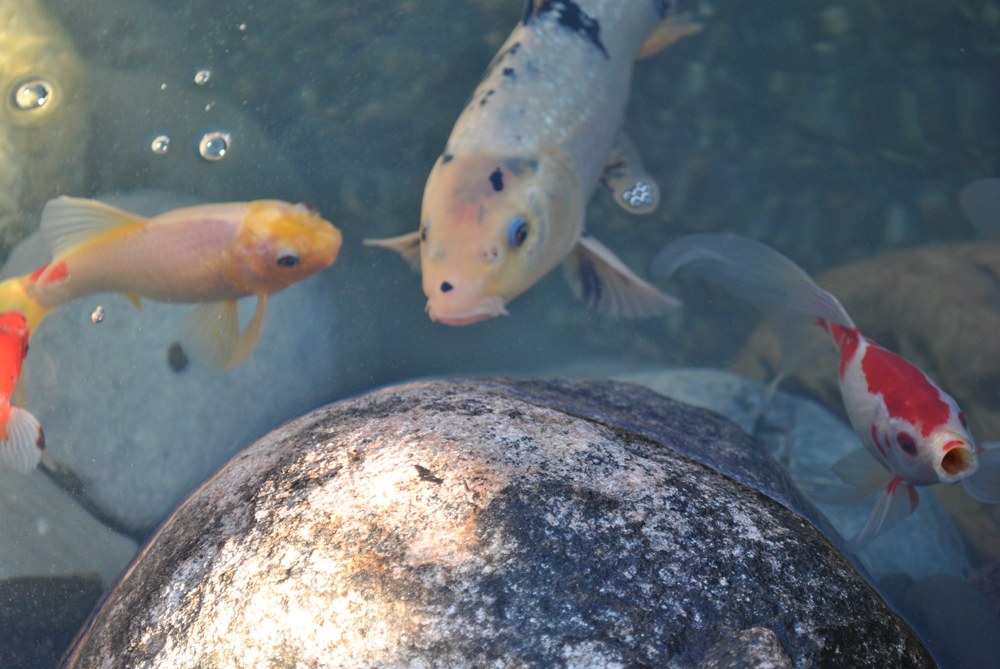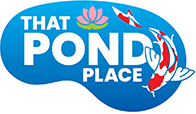
One of the first questions that new fish keepers ask is “how much do I feed my fish?”. The more appropriate question could be “how do I feed my fish?”. The part about quantity of food is best answered by the fish themselves, because they will let you know when they’ve had enough and lose interest in feeding time.
Feeding fish in your pond is different than feeding other types of pets, but most new fish keepers tend to treat feeding time for fish like they do other types of pets like birds, rabbits, cats, or dogs. For most of these pets you can fill a bowl and walk away, the animal will eat what it wants to eat, when it wants to eat, and you’re done. As a side note, even for those types of animals this is not the best feeding practice, nor one I recommend; but let’s face it, that is how many people handle the feeding of their pets.
One thing the fish will have in common with other pets is that they will eat what they need and then they are done. If you have thrown in too much food the fish will ignore it, but then this excess food has nowhere to go, it stays in the pond. Excess food quickly breaks down and begins to drag down water quality, raise nutrient levels (which is great for algae growth), discolor water, create odors, encourage pesky flies to hang around the pond, and create maintenance for the pond owner because this food clogs filters and pump intakes.
To toss in food to your fish and walk away is not good practice. Remember, fish do not over eat, we overfeed. Overfeeding a pond will only create poor, possibly deadly, conditions for your pond fish. So with the understanding that poor feeding practice can have possibly disastrous results, let’s bullet point some feeding tips:
• When feeding fish, take your time, at least several minutes. Do not toss food and walk away. This feeding time lets you connect with your fish, and observe them to see how they are doing health wise.
• Give small portions, let them clear ALL of it, and offer small portion again until they are slowing or not showing interest in feeding. Pay attention to how much it is they are eating so you can portion feedings if necessary.
• Do not throw food out to your fish, you are teaching them to stay away from you during feeding time. Offer food close to the edge of the pond where you are standing so they associate your presence with food. You are the FOOD GOD, so work it, be it.
• Try to have a “feeding station” for yourself and offer food from that area. This will also train the fish to associate your presence with the reward of food.
• If you have a skimmer system on your pond (like you should), try to choose a feeding station away from the draw of the skimmer, slow water is the best feeding area.
• Do not feed your fish twice as much before you go out of town, because they do not know you are going out of town and will not eat twice as much because they tomorrow they will not get fed.
• If you have someone coming by to feed your fish while you are away, make sure you pre-portion the feedings for the hired care taker, and make the portions smaller than typical.
• Keep in mind that fish eat different quantities of food at different times of year. How much a fish eats in May will be very different from how much they are eating in September. Adjust your feedings accordingly.
• In colder climates, do not feed your fish once water temperatures have settled around 52F, the fish will not properly metabolize/digest the food and this can lead to health issues.
Proper feeding habits for your pond fish will lead to happier and healthier fish with good growth rates and nicer coloration. Good feeding habits will also lead to a healthier nicer looking pond, cleaner water, and a lot less maintenance for the pond keeper. Do you have any feeding tips you want to add? Send them in!
All copyrights to this material belong to Mike Gannon.
